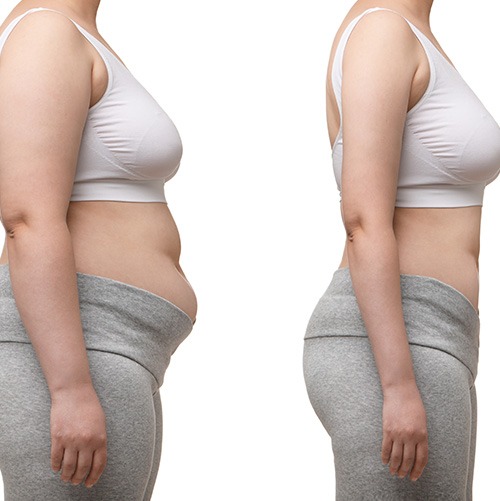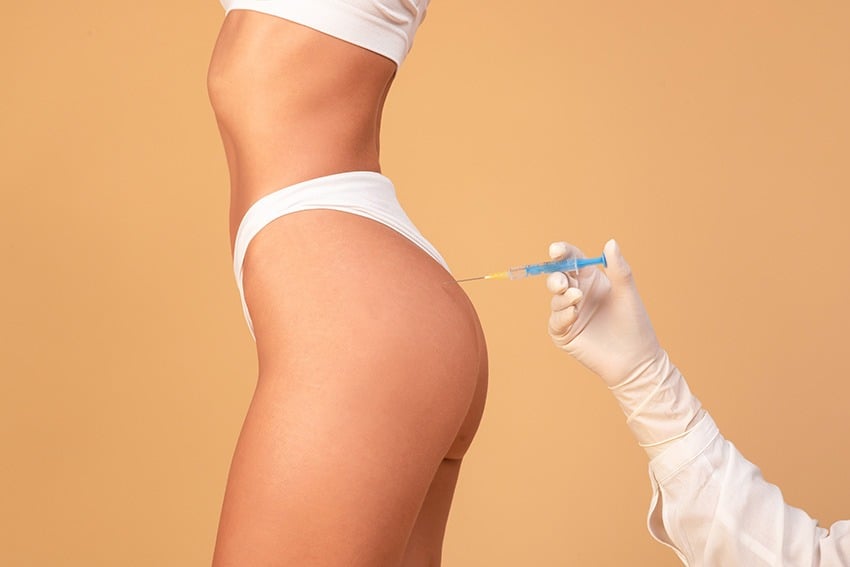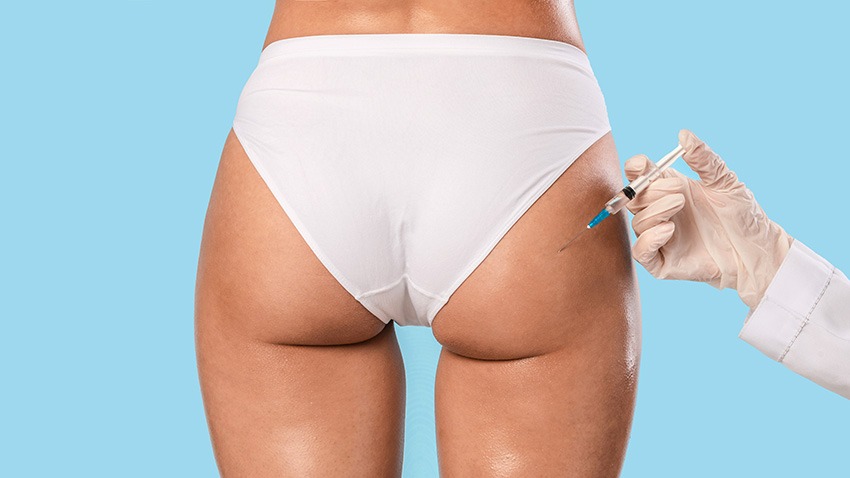Everything About Liposuction Surgery
Liposuction is a highly popular cosmetic surgery procedure today. This procedure allows for the removal of unwanted fatty tissues from the body. However, there are many details you should know about liposuction. In this article, you will find answers to all the questions you may have about the liposuction procedure.


İÇİNDEKİLER
What is Liposuction?
Liposuction is a cosmetic surgical procedure in which fat is surgically removed from areas with excessive fat accumulation. This procedure is performed to shape the body and reduce unwanted fat.
Liposuction is often chosen by many as a method for weight loss. However, this procedure is not solely intended for weight loss. Liposuction helps shape the body by reducing fat tissue. Individuals who have excess fat in certain areas despite exercising can achieve their desired results with liposuction for an ideal body shape.

What is Liposuction?
Liposuction is a cosmetic surgical procedure in which fat is surgically removed from areas with excessive fat accumulation. This procedure is performed to shape the body and reduce unwanted fat.
Liposuction is often chosen by many as a method for weight loss. However, this procedure is not solely intended for weight loss. Liposuction helps shape the body by reducing fat tissue. Individuals who have excess fat in certain areas despite exercising can achieve their desired results with liposuction for an ideal body shape.
Which Areas Can Liposuction Be Applied To?
Liposuction is typically applied to areas considered problematic. These areas include the abdomen, hips, waist, thighs, inner knees, upper arms, and neck. The localized fat tissue accumulated in these areas can be effectively removed with liposuction, allowing for body contouring.
How Long Does Liposuction Surgery Take?
Liposuction surgery is a surgical procedure performed to remove unwanted fat tissue from the body. The duration of this procedure can vary depending on the size of the areas to be treated, the level of fat accumulation, and the surgeon’s experience. Typically, liposuction surgery takes between 1 and 3 hours. However, liposuction procedures performed on smaller areas may take less time, while those performed on larger areas or multiple regions may take longer.
Who Are Suitable Candidates for Liposuction?
Suitable candidates for liposuction are individuals who meet certain criteria. First, they should be in good general health. People with chronic health issues such as diabetes, heart disease, or kidney problems are not suitable candidates for liposuction. Additionally, smoking or being overweight are also factors that make someone unsuitable for the procedure.
To be a good candidate, you should have a healthy body mass index (BMI). BMI is a calculation that measures your weight in relation to your height. Generally, individuals with a BMI over 30 are not considered suitable candidates for liposuction. Additionally, if you have excess fat accumulation in specific areas of your body, liposuction may be a good option for you. For example, areas like the abdomen, hips, thighs, or arms are commonly preferred regions for liposuction.

What is the Preparation Process Before Liposuction?
Before liposuction surgery, the patient must follow a series of instructions provided by the doctor. These instructions are given to ensure the success of the surgery and reduce the risk of complications. The preparations before liposuction may include:
Following the doctor’s instructions: It is important for the patient to strictly adhere to the instructions provided by the doctor before the surgery. These instructions may include required pre-operative tests, avoidance or use of certain medications, and necessary dietary adjustments.
Avoiding smoking and alcohol consumption: It is crucial to refrain from smoking and drinking alcohol before liposuction surgery. Smoking and alcohol can negatively affect the healing process and increase the risk of complications.
Proper nutrition: Transitioning to a healthy and balanced diet before liposuction is important. Consuming the necessary vitamins and minerals can support the recovery process.
Medical treatments: The patient should continue with any medical treatments as prescribed by the doctor. Regularly taking medications to manage existing medical conditions can help control those issues and facilitate the recovery process.
What Techniques Are Used During Liposuction?
The techniques used during liposuction are surgical procedures that allow for the removal of fat cells from the body. Liposuction is generally performed to remove accumulated fat from specific areas of the body as a cosmetic procedure. The main techniques include:
Traditional Liposuction: In this technique, fat deposits under the skin are suctioned out with the help of a vacuum. The surgeon first injects a special fluid to break down the fat cells and then uses the vacuum to remove the fat.
Ultrasound-Assisted Liposuction: In this technique, the surgeon uses ultrasound waves to break down fat cells. The fragmented fat is then suctioned out. The use of ultrasonic vibrations helps soften the fat tissue, making the suction process easier and more effective.
Laser-Assisted Liposuction: In this technique, the surgeon uses laser energy to melt the fat cells. The laser targets the fat tissue, causing it to liquefy. This technique allows for a more precise fat removal process, as the laser specifically targets fat cells beneath the skin.
What is the Recovery Process After Liposuction?
The recovery process after liposuction involves several steps that the patient must follow. During the first few days, the body may respond to the effects of the surgery, and some discomfort may occur. Therefore, it is important for the patient to carefully follow the post-operative instructions.
During this time, the patient may experience swelling, bruising, or mild pain. This is normal and typically subsides within a short period. Although the recovery process can vary from person to person, it generally lasts around 3 to 4 weeks.
Is Pain and Discomfort Normal After Liposuction?
It is normal to experience some pain and discomfort after liposuction surgery. This is a natural result of the surgery and typically occurs immediately after the procedure. Pain and discomfort may arise due to swelling of the tissues in the treated areas and the healing process.
Pain and discomfort after liposuction are usually most intense during the first few days. However, this process can vary from person to person. Some individuals may feel minimal pain, while others may experience more discomfort. As the recovery progresses, the pain and discomfort generally decrease.
Will There Be Scarring After Liposuction?
During liposuction, small incisions are made, and fat cells are suctioned out through these incisions. These incisions are typically made in natural body folds or areas where they can be concealed. As a result, there are usually small scars left after liposuction. However, since each individual’s skin type is different, the formation of scars can vary from person to person.
When Do Scars Heal After Liposuction?
Scars from liposuction typically heal and fade over time. Initially, the scars may appear red or purple, but they will gradually change color. The healing process of the scars can vary depending on the individual’s genetic traits, skin type, and how well the healing progresses. Complete healing and fading of the scars usually take several months. To speed up the healing process, it is important to follow the recommendations provided by your doctor.
When Do Liposuction Results Start to Show?
The recovery process can vary depending on the individual’s body type, the extent of the surgery, and the techniques used. However, liposuction results typically begin to be visible after 3 to 4 weeks. Immediately after the procedure, swelling, bruising, and mild pain may occur. This is normal and will subside over time.
It may take several months for the full results of liposuction to become apparent. Factors such as the healing of the surgical area, the reduction of swelling and edema, and the tightening of the skin all influence the final outcome.
Are Liposuction Results Permanent?
After liposuction, the fat cells that are removed are permanently eliminated. However, the surrounding fat cells may continue to grow. Therefore, it is important to maintain regular exercise and healthy eating habits after liposuction to ensure the longevity of the results.
How Much Weight Can Be Lost with Liposuction?
During a liposuction procedure, the surgeon removes fat cells from beneath the skin. Typically, between 2 to 5 kilograms of fat can be removed. However, the primary goal is body contouring and reducing unwanted fat deposits, so the amount of weight loss is a secondary outcome.
In Which Cases is Liposuction Not Recommended?
Liposuction may not be suitable for everyone. There are certain situations where liposuction is not recommended. First, liposuction is not advised for individuals who are overweight. Liposuction is not a weight-loss method but is performed for body contouring and reducing excess fat. Overweight individuals are generally advised to try other weight loss methods first.
Liposuction should also not be performed on individuals with certain health issues. People with serious health problems such as heart disease, lung disease, or diabetes are not suitable candidates for liposuction.
What Are the Costs of Liposuction?
The cost of liposuction is primarily dependent on the size and complexity of the area to be treated. Liposuction performed on larger areas of the body may require the removal of more fat, which can increase the cost. Similarly, if liposuction is performed on multiple areas, the costs may also rise.
Additionally, liposuction costs can vary based on the surgeon’s experience and expertise. More experienced surgeons may charge higher fees, but this can be important for ensuring the surgery is performed successfully. Given that liposuction provides long-lasting results and reduces the risk of complications, investing in a skilled specialist is important.
Does Liposuction Fall Under Insurance Coverage?
Liposuction is typically performed for aesthetic purposes and is not considered a medical necessity. Therefore, insurance companies generally do not cover the cost of liposuction. However, in certain exceptional cases, insurance may cover the procedure. For example, if liposuction is deemed a medical treatment for health issues caused by excess weight, it could potentially be covered by insurance.
Can Other Aesthetic Procedures Be Combined with Liposuction?
Yes, many different aesthetic procedures can be performed alongside liposuction. Since liposuction is a surgery that removes excess fat, it is often combined with other aesthetic treatments for body contouring and slimming purposes. These combinations are determined based on the patient’s desires and the doctor’s evaluation.
One of the most common aesthetic procedures performed alongside liposuction is breast augmentation. The fat removed during liposuction can be transferred from other areas of the body and injected into the breast tissue. This allows for both body shaping and breast enlargement to be done simultaneously.
In addition, procedures such as tummy tucks, arm lifts, and shaping of the thighs and buttocks can also be performed in conjunction with liposuction. While liposuction removes fat, the other aesthetic procedures help improve and tighten the body’s shape.
What Are the Risks of Liposuction Surgery?
Like any surgical procedure, liposuction carries potential risks and complications. These risks can vary depending on the patient’s overall health, the area being treated, and the techniques used.
Some of the risks associated with liposuction include infection, bleeding, hematoma (blood accumulation), skin damage, nerve injury, wound healing issues, and anesthesia-related complications.
The risk of infection exists in any surgical intervention, including liposuction. Infections that occur during or after surgery may require appropriate antibiotic treatment. Bleeding can also occur during or after the surgery, usually due to damage to blood vessels in the treated area. A hematoma refers to the accumulation of blood, often causing bruising and swelling at the surgery site.
What Activities Should Be Avoided After Liposuction?
The recovery process is a crucial factor after liposuction, and to ensure complete healing, certain activities should be avoided.
Exercise and intense physical activities: After liposuction, it is important to avoid exercises and strenuous physical activities to reduce the risk of bleeding and swelling in the body. These activities can increase blood flow and may cause negative effects in the treated areas. For 4 to 6 weeks post-operation, you can engage in light exercises and walking as recommended by your doctor.
High-impact activities: After liposuction, activities that put excessive strain on the body should be avoided. For example, weight lifting, carrying heavy objects, or standing for long periods of time may affect the recovery process and potentially impact the results. It is essential to rest during the recovery period and avoid high-impact activities.
Medications That Can Increase Bleeding After Liposuction Surgery
There are certain medications that can increase the risk of bleeding after liposuction. Therefore, it is important to follow your doctor’s prescribed medications and avoid drugs like aspirin, which can elevate the bleeding risk. However, if you feel the need for any medication, you should contact your doctor and, if necessary, ask about alternative medications.
How Should Nutrition Be After Liposuction Surgery?
After liposuction, following the right nutrition plan is crucial. Proper nutrition plays a significant role in speeding up the recovery process, reducing the risk of infection, and supporting overall health after surgery.
Increase Fluid Intake: It is essential to consume enough fluids for tissue healing after liposuction. Drinking at least 8-10 glasses of water per day will help maintain hydration levels and assist in flushing out toxins from the body.
Consume Protein-Rich Foods: The body needs proteins to support the healing process after surgery. Consuming high-protein foods like chicken, fish, eggs, and dairy products will help accelerate tissue repair.
Opt for Healthy Fats: After liposuction, it is important to consume healthy fats. Choosing foods rich in omega-3 fatty acids, such as olive oil, avocado, and fish, will help reduce inflammation in the body and support the healing process.
What Is the Care Routine to Follow After Liposuction?
To speed up the recovery process and prevent potential complications after liposuction, certain care recommendations should be followed:
Rest During the Recovery Process: After liposuction surgery, the body needs rest. It is important to avoid strenuous activities for a certain period after the surgery. Following your doctor’s advice on resting will help accelerate the healing process.
Wear Compression Garments: Your doctor may recommend wearing compression garments after the surgery. These garments help reduce swelling and bruising in the treated area. Wearing them regularly ensures an effective recovery process.
Wound Care: Proper wound care is essential for the healing of stitches and the incision. Following your doctor’s advice on applying sterile bandages and paying attention to wound cleaning will help reduce the risk of infection.
Does Gaining Weight After Liposuction Affect the Results?
It is possible to gain weight after liposuction. If you gain weight, the fat cells in your body will expand, which can reduce the effectiveness of the procedure. Therefore, to maintain the results of liposuction, it is important to maintain a healthy lifestyle.
Specifically, creating a balanced diet plan and exercising regularly are key. A healthy diet combined with exercise can help reduce fat deposits in the body and prevent weight gain. Additionally, it is important to attend regular follow-up appointments with your doctor and follow their advice.